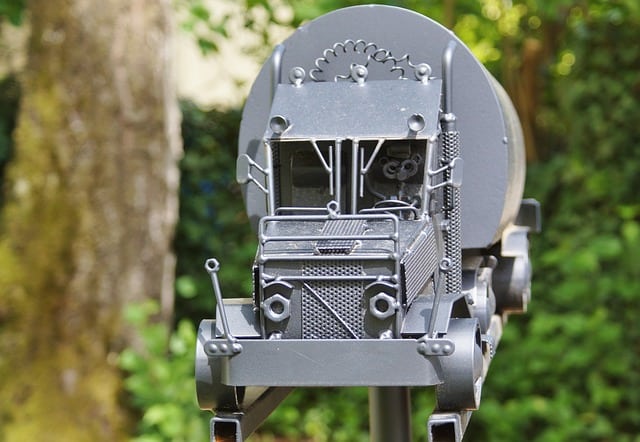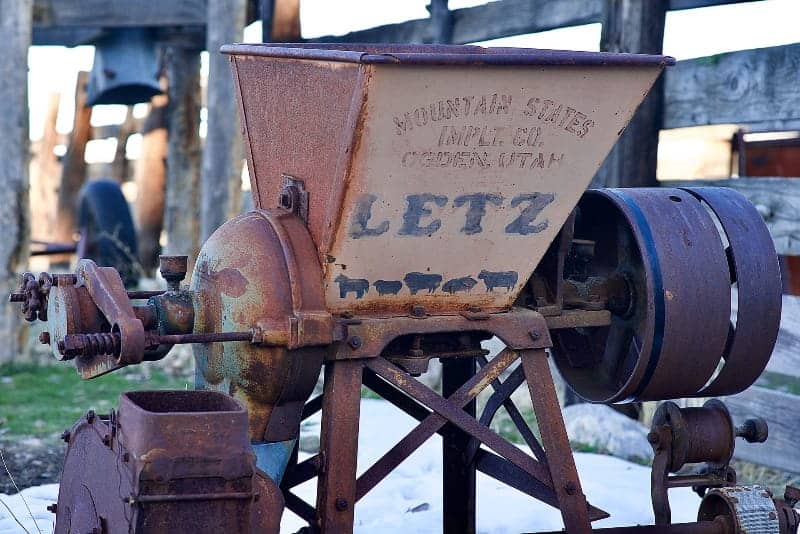Rusting occurs when iron and steel are exposed to oxygen and moisture. For example, let’s think about things that can be painted; you probably painted a car you had in mind with your favorite color.
The paint is not only there to make your car look nice, but it has a more important purpose to avoid rust.
Table of Contents
- Understanding The Term Corrosion
- How to Treat Metal to Prevent Rust
- How to Protect Metal Art From Rust
Understanding The Term Corrosion
Rust describes the corrosion of iron and steel. The term corrosion is used to describe a metal’s breakdown when it is exposed to the environment.
When I say that metal corrodes, I mean that it has reacted with water and oxygen in the environment to form their respective oxides.
To demonstrate this using a simple experiment, it is sufficient to place an iron nail in four analysis tubes as follows:
- Fill one with running water until the nail is submerged.
- Fill another one with tap water and add half a spoonful of sodium chloride. Shake it from side to side to ensure that the sodium chloride is completely dissolved.
- Fill the third analysis tube with freshly boiled water and add a thin layer of oil when boiling the water. This will remove the dissolved oxygen, and the oil layer will prevent the oxygen from dissolving further.
- In the last analysis tube, add a tablespoon of calcium chloride; it removes moisture or water.
- So in the first analysis tube, the nail is revealed to oxygen and moisture.
- In the second analysis tube, the nail is revealed to oxygen, moisture, and salt.
- In the third analysis tube, the nail is only revealed to water.
- In the fourth analysis tube, the nail is revealed to oxygen only.
Seal all four analysis tubes with a rubber stopper and let them stand for a couple of days.
You will find that the nails in the first and second analysis tubes have rusted. In particular, the second analysis tube’s nail has rusted more than the nail in the first analysis tube. The rust has likely come off.
You may see a reddish-brown precipitate at the bottom of these tubes.
The nails in the third and fourth analysis tubes have not oxidized.
So what happened here?
The iron has undergone an oxidation reaction forming hydrated iron oxide or rust.
Salt and acid act as catalysts for this reaction, so the second analysis tube’s nail formed more rust than the first analysis tube’s nail.
Rust can be very costly if we have to replace these iron and steel items frequently.
How to Treat Metal to Prevent Rust
Metal rust can be treated and prevented by following these three simple steps:
- Painting: If we paint the areas exposed to oxygen and moisture, as is done on many bicycles and cars.
- Adding Oil or Grease: Another method to prevent rust is to put a layer of oil or grease; this is done on many bicycle chains. It helps lubricate the moving parts, which reduces friction and slows down the rusting process.
- Galvanizing: Another way to prevent rust is a sacrificial protection method called galvanization. Zinc is more reactive than iron when exposed to oxygen and moisture. Zinc corrodes faster than iron, so if we put them together, zinc protects the iron but sacrifices itself, hence the term sacrificial protection. This method is applied to prevent oxidation in ships.
In addition to preventing oxidation, there is another advantage to this galvanizing process, the layer of zinc oxide that forms can be removed. The newly exposed zinc can be corroded once again, thus further protecting the iron or steel hull.
How to Protect Metal Art From Rust

Here is how to can protect metal art from getting rust by following these practical steps:
You can use Plasti Dip to protect and seal metal garden art.
First, apply a Plasti Dip primer; using an aerosol means that the application is quick and the coverage is excellent. The primer is conveniently available on Amazon. You can check the price here.
After applying the Plasti Dip primer, let it dry for about 30 minutes, depending on the outdoor climate.
Then apply your Plasti Dip top coat. You can choose a clear topcoat or any of the wide range of colors available. Apply as many coats as you wish.
I suggest applying up to 3 coats and letting them cure for about 4 hours.

